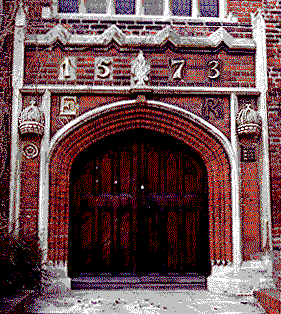Chipping Barnet stands on water-bearing pebble gravel, accessable water made Barnet an ideal place for early settlement, despite this there is no evidence of a Roman or Saxon settlement in the then heavily wooded Chipping Barnet. At the beginning of the 11th century the Manor of Barnet would have been owned by the Abbot of St Albans, there was only a small community around St. Mary's Church in East Barnet (known then as Barnet, became East Barnet in 14th century). Chipping Barnet became established later when the road from London to St Albans was built. The name Barnet comes from Anglo-Saxon baernet meaning 'the place cleared by burning' and became prefixed 'Chipping', meaning The Market, in 1199 when King John's charter granted permission to the Abbot of St Albans to hold a weekly market in Barnet. Pilgrims, tradesmen, merchants and armies would pass through Chipping Barnet.
In the 13th century there was a pottery kiln in Arkley, a mill by Pymmes Brook which was owned by the Abbot of St Albans, a market was located below Chipping Barnet Church, which was then a Chapel-of-ease of the more important St Mary's, East Barnet. Of the 350 population in the Manor of Barnet in 1348 80 died in the Black Death. In 1381 men from Barnet and St Albans were involved in the Peasant's revolt and a new church in Chipping Barnet was built in 1420, part of which still remains. In 1471 Edward IV's armies beat those of the Earl of Warwick in the Battle of Barnet, it is thought to have taken place around Hadley Highstone, where a column was put up in 1740.
 Tudor Hall, next to Barnet College in Wood Street, was built in 1577 to be Queen Elizabeth's Grammar School for Boys, this is the oldest building in Chipping Barnet today. In 1588 Queen Elizabeth I granted a charter for a weekly market and two yearly fairs, although the cattle fair was already in existence at this time. Many armies passed through Barnet during the Civil Wars 1642-1648 but no major battles were fought in the area.
Tudor Hall, next to Barnet College in Wood Street, was built in 1577 to be Queen Elizabeth's Grammar School for Boys, this is the oldest building in Chipping Barnet today. In 1588 Queen Elizabeth I granted a charter for a weekly market and two yearly fairs, although the cattle fair was already in existence at this time. Many armies passed through Barnet during the Civil Wars 1642-1648 but no major battles were fought in the area.
In 1652 Barnet Well was documented as having medicinal waters, later in 1664 Samuel Pepys visited Barnet Well to take the water. Chipping Barnet was also referred to as High Barnet.
In the 18th century improved roads meant Barnet was a busy town with many Inns and Alehouses, in 1756 Barnet is listed as having accommodation for 190 beds and stabling for 450 horses, 150 coaches would pass through Barnet each day. This was also the time of enclosure, the Duke of Chandos enclosed 135 acres of Barnet Common in 1729 and in 1777 Enfield Chase was enclosed. Royal mail coaches started in 1784, using Barnet as a staging post for coaches travelling north from London.
To help road traffic, Barnet Hill was reshaped to a gentler slope in 1825, but in 1838 trains started to run from Euston to Birmingham and road traffic decreased, the stagecoach era was ending. Barnet Station on the GNR Kings Cross to Hitchin Line opened in 1850, the British Land Company bought land not used by the railway, roads and houses were built, New Barnet was born, the station was re-named New Barnet in 1872 when High Barnet station was opened, also in that year the Barnet and District Gas and Water Company was formed. The population of New and East Barnet grew from 353 in 1801 to 2,925 in 1861, East Barnet changed little but New Barnet's population rapidly grew. Barnet was changing from rural town to London suburb. Barnet had a tram service in 1907, trolley buses in 1937 and in 1940 High Barnet station became part of the London Underground.
Further reading available from local libraries
Historic Barnet, edited by W. H. Gelder
East Barnet Village, Gillian Gear and Diana Goodwin
A Place in time, The London Borough of Barnet up to c.1500, HADAS
Chipping - High Barnet 800 Years, a history for young people by Ralph Walker.
|
More information
|